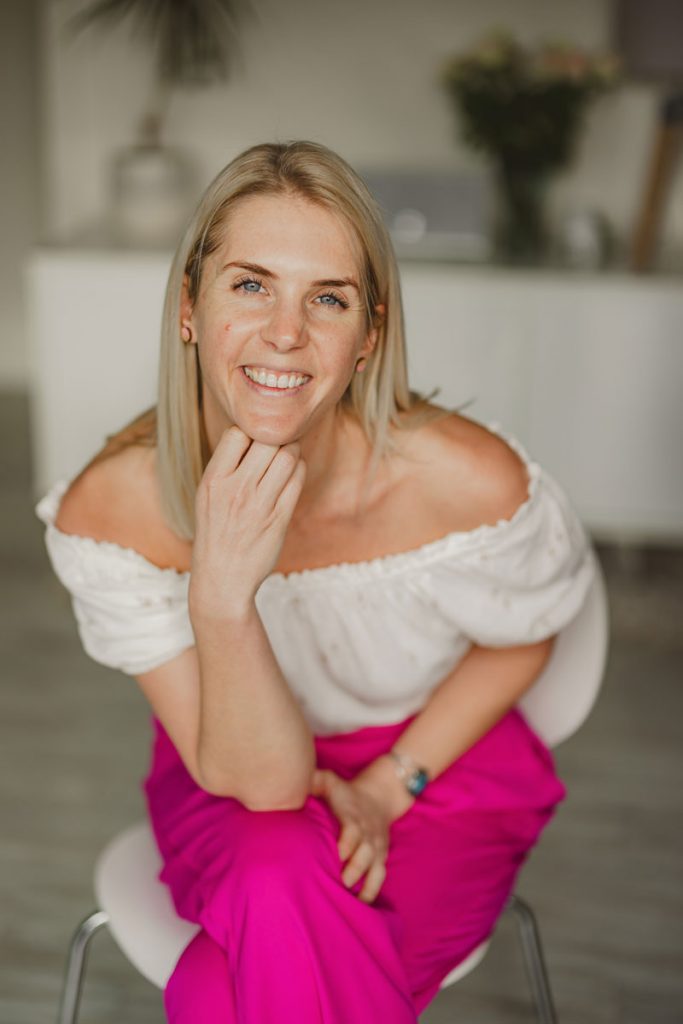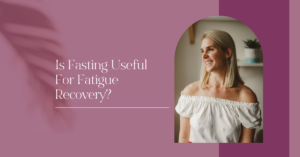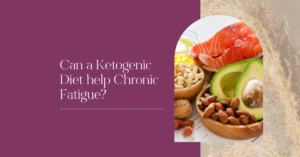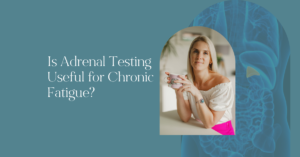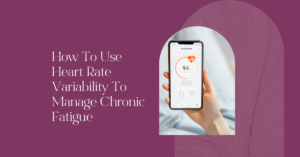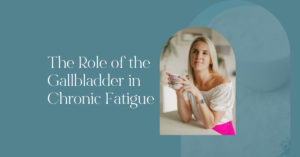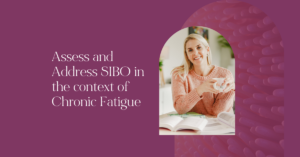I’m a big fan of data and becoming the scientist of your own physiology. For this reason I think wearables can be useful for fatigue recovery generally and for exercise management in fatigue recovery.
There are many different wearables available including:
- Garmin
- Oura
- Whoop
- Fitbit
- Polar
- Apple Watch
I only have experience with Garmin and Oura and therefore I shall share my learnings and observations from these specifically.
Oura Ring
Works best for: Assessing readiness and recovery
May also be useful for: Sleep monitoring (see comments below) and menstrual cycle tracking
Other useful features: Oura offers a selection of guided meditations, breathing exercises and sleep stories.
Readiness and Recovery:
The oura ring measures your heart rate (HR) and heart rate variability (HRV)* while you sleep. It the offers the following data:
- Lowest resting heart rate
- Average resting heart rate
- Average HRV
- Highest HRV
- Readiness Score which may factor in other variables such as sleep and body temperature
What is Heart Rate Variability (HRV?); Heart rate variability is the physiological phenomenon of variation in the time interval between heartbeats. Greater variability between heartbeats can be a sign of greater parasympathetic tone of the autonomic nervous i.e. the body is in rest and digest when HRV is greater. Smaller variability between heartbeats can be a sign of greater sympathetic tone i.e. the body is under greater stress.
A lower resting heart rate and higher HRV may be a sign of good recovery and therefore readiness to exercise or exert yourself a little more on that specific day. This can be useful data if you want to make decisions about your workouts or how much you can commit to on any given day.
If you have a workout planned and your heart rate is higher than you would like and your HRV lower than you would like, it might be a helpful nudge to reschedule your workout and add in extra restorative practices or nervous system self care. If you were making plans to increase your workload or try something new, maybe today is not the day.
A lower heart rate and higher HRV is not always better…
There is a phenomenon known as “Parasympathetic Overtraining Syndrome” (POS) whereby the nervous system enters a heightened parasympathetic state to “force” the body into recovery.
There is not a lot of information or research on POS and it was something that I stumbled on in my fatigue recovery journey while listening to a podcast with Dr Mike T Nelson on Dr Ruscio Radio.
When I discovered what it was, it made a lot of sense in the context of my fatigue recovery journey thus far. Whenever my resting heart rate was at its lowest and HRV was at its highest – which almost always coincided with my menstrual cycle – Oura would offer me an encouraging readiness score. Yet, this was often the time I felt worse, not better and my exercise tolerance was lower.
It is possible that the stress on menstruation, which can be energetically demanding, was placing extra strain on my body, asking me to rest. However, I would also experience a similar trend at other times of my cycle so this did also happen independently of menstruation.
What I learnt over time was that my ideal readiness was somewhere in between my lowest heart rate readings and my highest. This could also vary depending on where I was in my cycle so there was a different set of “rules” for the different phases of the cycle.
I noted that a heart rate below 50 bpm in the follicular phase of my cycle (Day 1 of menses to ovulation) often meant that my body was needing more recovery time. In the Luteal Phase (from ovulation to menstruation), a reading around 52bpm was more ideal.
I arrived at this conclusion by using the data, correlating it with how I felt at the time and eventually working out what worked best for my body based on trial and error.
The moral of the story here is that wearables are incredibly useful and we also want to learn to use them in conjunction with the body’s signals, not independently of them.
Garmin
I was gifted a Garmin VenuSQ for my birthday in 2020 and therefore I will share my experience with this watch specifically.
Works best for: Counting steps, heart rate monitoring during exercise (can be inaccurate in cold water), I also like the body battery and stress score which helps me to pace periods of challenge and rest throughout the day.
May also be useful for: Sleep monitoring and menstrual cycle tracking
Other useful features: Garmin Pay or Calorie Expenditure if that data is important to you
I have personally found the garmin useful for tracking my steps and building them up over time. Garmin determines your average step count across 7 days and sets you a daily target based on this average. My inner achiever loves hitting my target but this can be both a blessing and a curse when you push yourself harder than you should to hit the goal.
I have found Garmin mostly reliable for tracking my heart rate during my workouts. I relied on it the most in my early days when I was building up my walking while keeping my HR under 110 bpm. I don’t find the heart rate data as reliable in cold water and it does tend to reflect a much higher heart rate.
I have also found the heart rate monitor useful during resistance workouts to make sure I return my heart rate to a certain level during my rest breaks.
Finally, I’m a big fan of the body battery and rely on it a lot. At any time you can check your watch and you will get real time data of your heart rate and a stress score. The stress score is based on HRV.
This data is then used to determine your body battery as you move throughout the day. Activities which reduce your heart rate and increase your HRV charge your battery. Activities that cause more stress deplete your battery. This feature encourages me to pace and take rest breaks throughout the day. It works well for me because I am very data driven and I like to think of it as external accountability.
I have also noticed that when I eat foods which are stressful to my body (usually high sugar or high carbohydrate foods) that this can affect my HR and stress score for 2-3 hours afterwards. This helps me to stay accountable to eating well and understanding which foods my body likes better.
In the early days of my recovery, almost every meal would put my body under stress for up to 2 hours, but since my digestive health and blood sugar regulation have improved, meals (and workouts) are less stressful after the event.
When I exercise in a way that puts too much stress on my body, my stress score can stay elevated for several hours afterwards and my body battery depletes faster. This helps me make adjustments to my workouts so that I can find the right balance to support my recovery. As my health and fitness have improved I generally notice that my stress score is less elevated after workouts and my body battery become less depleted in the hours afterwards.
Sleep and Menstrual Cycle Trackers
While on the topic of wearables, I wanted to write a small section on both of these features to offer my opinion.
Menstrual Cycle Trackers:
I have the original Oura Ring and I believe the Generation 3 Ring has better features for menstrual cycle tracking on which I cannot comment. However, I have enjoyed the body temperature monitoring with my current ring. Typically body temperature will increase after ovulation and this can be helpful to confirm ovulation and predict a period approximately 14 days later.
The following diagram shows the deviation in my body temperature across a full menstrual cycle. You can see the trend of a lower body temperature in the follicular phase and a higher body temperature in the luteal phase.
The Garmin VenuSQ has a menstrual cycle tracker which predicts your next period and phases of your period based on historical data.This is a common model for menstrual tracking apps, but I caution clients against overly relying on apps that work in this way. This type of tracking and other menstrual cycle tracking apps cannot know if you are actually ovulating and therefore cannot be a reliable source of information.
Although the oura ring has its imperfections, body temperature monitoring is preferable and more reliable.
Sleep
The Oura Ring is supposedly the leading technology when it comes to sleep tracking. That being said, I personally still take the data with a pinch of salt and tend not to over analyse.
I have typically found that my oura data shows multiple wake ups per night, often at times when I do not remember being awake. Perhaps I do move around a lot in my sleep and this restlessness could be a factor in sleep quality but when I have had a poor night’s sleep and I have been awake for 1-2 hours at a time, this often isn’t reflected in the oura data and I may still achieve an optimal sleep score.
That being said, I still do achieve the optimal amounts of deep and REM sleep for the most part. My guidance here would be; do what works for you. If you find the data helpful and informative in the context of your fatigue recovery, continue. If you find the data causes you anxiety, confusion and stress, you can shift your focus onto the data you find most empowering.
I still love my oura ring and even though I don’t worry too much about the sleep data the HRV, HR and body temperature features are valuable enough to make having one worthwhile.
Conclusions
Biometric data can be insightful and useful in recovery and every device has its pro’s and con’s. If you are thinking about investing in a device consider:
- What would I be doing differently if I had this information?
- Would this information make a worthwhile difference in the trajetory of my recovery?
- Is this the most important thing I should be focussing on right now or is my money spent on something else e.g. functional testing, practitioner fees, therapy, a holiday 🙂
Always here to help and support you. If you would like to explore your options, you can find out more here.


